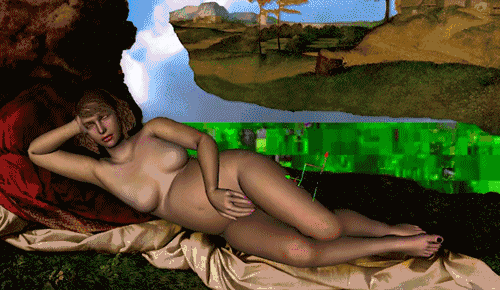
Uncomposed (after Titian after Giorgione) by Georgie Roxby Smith [GIF by PK]
A collection of items from the Prosthetic Knowledge Tumblr archive and around the web, looking at a Fine Art archetype today.
Uncomposed (after Titian after Giorgione) by Georgie Roxby Smith
Uncomposed (after Titian after Giorgione) from Georgie Roxby Smith on Vimeo.
Renaissance art piece composed as contemporary New Media machinima, a 21st Century Venus
3D machinima, video, found image, found sound
Made specifically for Composite at Gallery One Three Uncomposed (after Titian after Giogione) deconstructs Giorgione’s Sleeping Venus, itself a composite, the landscape and sky being completed by Titian following Giogione’s death in 1510. The work was a landmark of its era, reflecting a new shift in modern art with the inclusion of a female nude at its centre. Employing three-dimensional computer graphics and elements of Giorgione’s original masterpiece, Roxby Smith replaces his stylised renaissance figure with a fantasised digital body transplanted into an augmented hyper real landscape. In the likeness of her present day artist, the 21st Century Venus will not lie still for her voyeurs, obstinately returning the male gaze from her new digital paradigm, Sleeping Venus awakes.
Machina by Claudia Hart
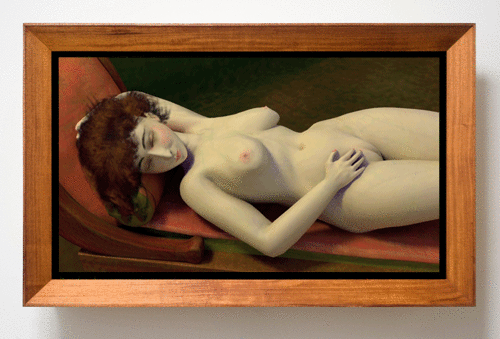
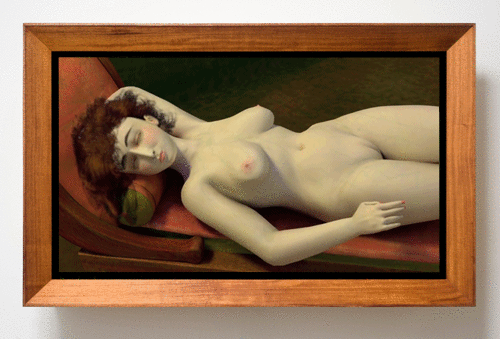
Framed digital art piece is a 3D animation of a sleeping female nude subject in the classical pose of Venus / Odalisque - a two minute example of the twenty minute work:
"Machina" (2008) by Claudia Hart from bitforms gallery on Vimeo.
“Machina” is a 3D animation portraying the compressed time and space of painting, shows a dreaming character whose slow, drowsy movements articulate all of the minutia of a single moment. “Machina” uses the most advanced techniques of virtual reality simulation, and a series of animations that result in a representation that is sensual and organic. Occasionally, Machina opens her eyes to gaze at the viewer, in a moment of transformation, allowing the object of our gaze to subject us to hers. Based loosely on works such as Titian′s Venus and paintings by the Baroque artist Peter Paul Rubens, “Machina” is meant to introduce sensuality into the virtual realm by employing an idea of beauty as defined by a woman.
Video Link | PK Link
Love Is All by Alejandro Gómez-Arias
While the Odalisque / Venus is a serious genre in Art, it has been said to also be a circumnavigational way to provide fantasy and titillation to patrons. In this piece, we have the first known example of pornography developed with the Kinect camera. It is surprising that (to the best of my knowledge) the technology has not been used to create pieces to explore the human form, so for better or worse this is the only known example to date. The video was uploaded two weeks ago, but has since been removed. Here are some animated GIFs of the piece:
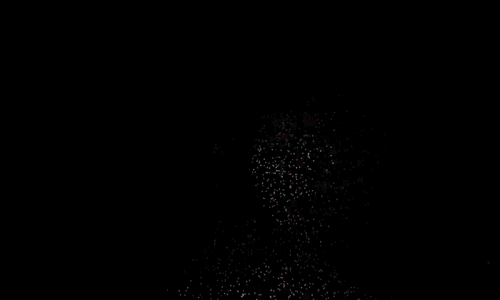
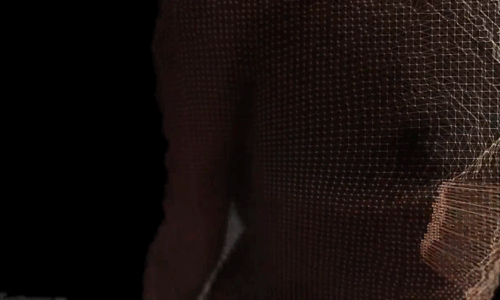
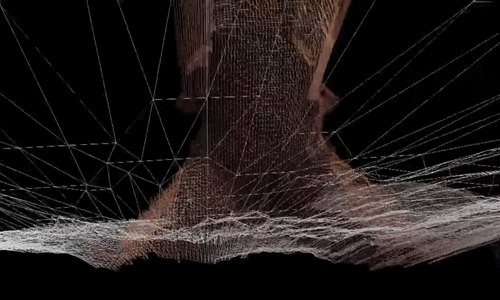
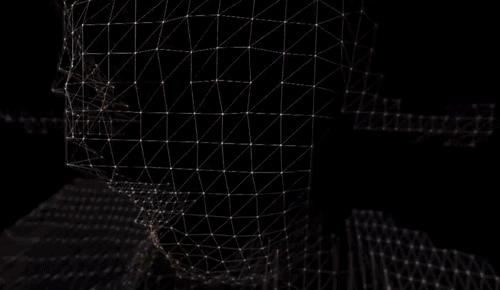
PK Link
Eye-tracking Fine Art: Odalisque a la culotte grise (Matisse), and the proposal of the “opsieme”

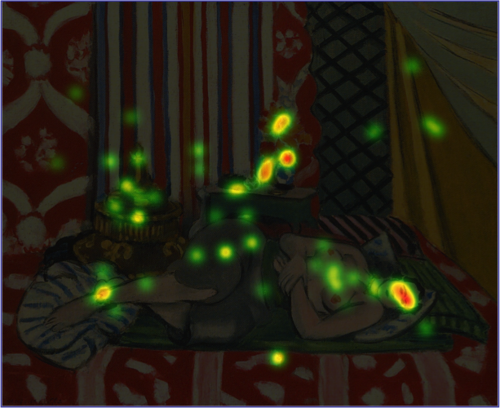

According to cognitive neuroscientist Stanislas Dehaene, recognizing letters and their combinations — called graphemes — and then creating an interface between what’s written and what’s articulated (phonological awareness) is the way to gain access to the lexicon that we use to communicate. If we indeed pay attention to the basic elements that compose the written sentence, we find letters, syllables and words. However, the smallest significant element of the sentence is probably the grapheme, since the whole understanding process derives from it. The grapheme is the written equivalent of the oral phoneme. It is comprised of the smallest group of letters making a phoneme. For example, in French, the phoneme [o] has several graphemes : o, au, and eau. Unlike a letter, a grapheme represents better the phonology of a language, or what a language sounds like. The French language counts 130 graphemes.
Does this same concept apply to a painting or an image ? Just like in the reading process, the image undergoes several mutations between the retina and the sensory areas of the cerebral cortex, whereby the basic components of the image (forms, colors, orientation of the lines) are dissected first and then transmitted to the visual areas. It is only then that the image is reconstructed, and that it will be confronted against other known representations that are stored in our memory for an identification of the present image. Dismantling, reassembly and identification are the three steps in the process of the visual representation, whether artistic or natural …
… Fixation can be equated with the time necessary to identify the smallest significant visual unit in an image. Just as a phoneme is the smallest articulated unit, and a grapheme is the smallest written unit, we suggest opsieme as a designation for the smallest significant visual unit : « opsie » – from the Greek ops, opsis, which means eye, vision and « eme », suffix which signifies basic unit.